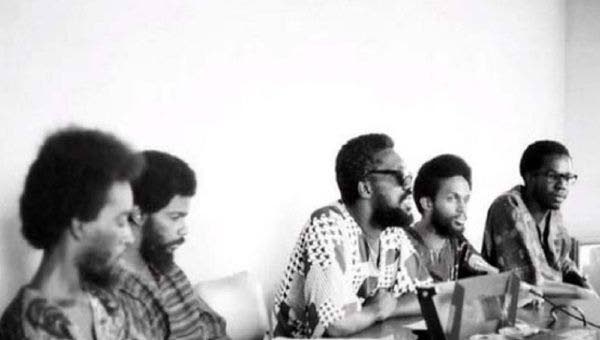UWI protest of 1969 revisited

AIYEGORO OME
SOME people have written about the blockade of the south gate at UWI on October 18. Many referenced a similar event on February 26, 1969 when UWI students led by Makandal Daaga, then Geddes Granger, manned the same gate and prevented Roland Michener, the then Governor-General of Canada, from entering the campus.
The National Joint Action Committee (NJAC) was formed that evening at the Students Guild and began the Trinidad and Tobago Revolution of 1970, one of the foremost movements for change in the Caribbean. I recognise the legitimacy of the current student concerns about crime on campus and there is nothing I have seen or heard that would convince me that the police were right in what they did.
Furthermore, I recall how around 2,000 students at Mona had to shut down their campus because of the attacks on them. However, there is a fundamental difference between then and now.
In 1969, the UWI students' blockade came about after months of activism and social engagement. There was the specific demonstration against the imprisonment of Caribbean students at Sir George Williams University (now Concordia) in Montreal. The collective experiences prepared students for any eventuality. Planning was pre-eminent even though, as in all things, there was room for spontaneity.
The WI students in Canada had been agitating against the racism of one Perry Andersen, a biology professor. They were accused of burning a computer centre and Caribbean governments were not concerned about assisting them. Daaga entered the UWI in 1966 after years of social and cultural work in PEGASUS.
When he became the Guild president, students were considered to be elitist and apathetic. But between 1967 and 1968 there was the beginning of a time of great ferment at UWI. In 1967, students at UWI took part in the CARIFTA debates between UWI economists and local private sector leaders.
The war in Vietnam was waging. When the American Ambassador William Costello angrily objected to a student’s article about American involvement in the war, the Students Guild declared that the Ambassador was persona non grata on the campus.
Daaga transformed university students. During 1968, he encouraged students to do community work. He recruited undergraduates for outreach programmes such as the John John Community Project. Once a week, several volunteers would go to St Paul Street to teach remedial classes.
Daaga and other student leaders declared that students should participate on all administrative bodies at UWI. In August 1968, student participation became institutionalised at the 5th Inter Campus meeting of Students Guild Presidents. Alongside Daaga there was Mona Guild President Ralph Gonzalves, now Prime Minister of St Vincent & the Grenadines, and Darlington Smith (Cave Hill).
By October '68, the Jamaican government had banned Dr Walter Rodney from returning after the Black Writers Conference in Canada. Protesting students demonstrated from St Augustine to the Prime Minister’s Office, White Hall. 1969 was a climactic year. Students protested when lecturer Dr Clive Thomas was refused appointment. They demonstrated against the British invasion of Anguilla. They were involved in the Bus Strike and the non-renewal of the late Dr. Andrew Camacho’s contract. During that year the students in Montreal requested assistance in support of their struggle and history was made.

Comments
"UWI protest of 1969 revisited"